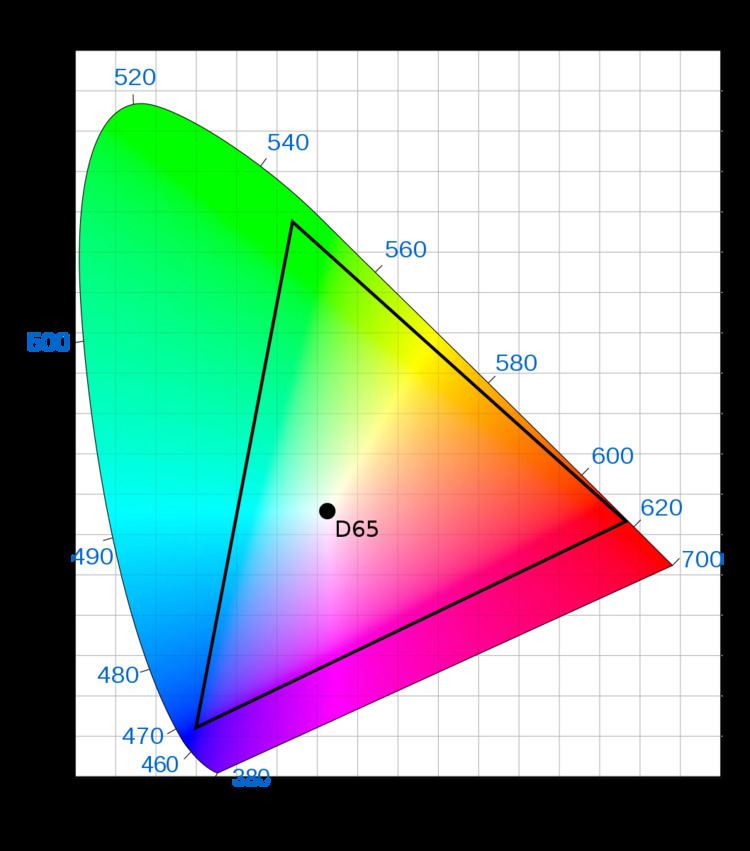 | ||
DCI-P3, or DCI/P3, is a common RGB color space for digital movie projection from the US-American film industry. In the CIE 1931 xy chromaticity diagram the DCI-P3 color space covers 45.5% of all chromaticities and 86.9% of Pointer’s gamut. In the CIE 1976 u’v’ chromaticity diagram the coverage is 41.7% and 85.5% respectively. The blue primary color is the same as sRGB and Adobe RGB; the red primary color is a monochromatic light source and has a wavelength of 615 nm. DCI-P3 was defined by the Digital Cinema Initiatives (DCI) organization and published by the Society of Motion Picture and Television Engineers (SMPTE) in SMPTE EG 432-1 and SMPTE RP 431-2. As a step towards the implementation of the significantly wider Rec. 2020 it is expected to see adoption in television systems and in the home cinema domain.
Contents
History
On November 10, 2010, SMPTE published SMPTE EG 432-1:2010.
On April 6, 2011, SMPTE published SMPTE RP 431-2:2011.
On January 4, 2016, the UHD Alliance announced their specifications for Ultra HD Premium which requires devices to display at least 90% of the DCI P3 color space.
In September 2015, Apple's iMac desktop became the first consumer computer with a built-in wide-gamut display, supporting the P3 color space.
In September 2016, Apple's 9.7-inch iPad Pro shipped with a display supporting P3 color.
In August 2016, the Phablet Samsung Galaxy Note 7 shipped with a wide-gamut display with P3 color gamut, but the device was discontinued in October 2016.
In September 2016, Apple's iPhone 7 shipped with a wide-gamut display, supporting P3.
In October 2016, Microsoft's new Surface Studio desktop computer.
Also in October, Apple's new MacBook Pro notebook computer were released with P3 displays.
System colorimetry
DCI-P3 has a 25% larger Color Gamut than sRGB.
